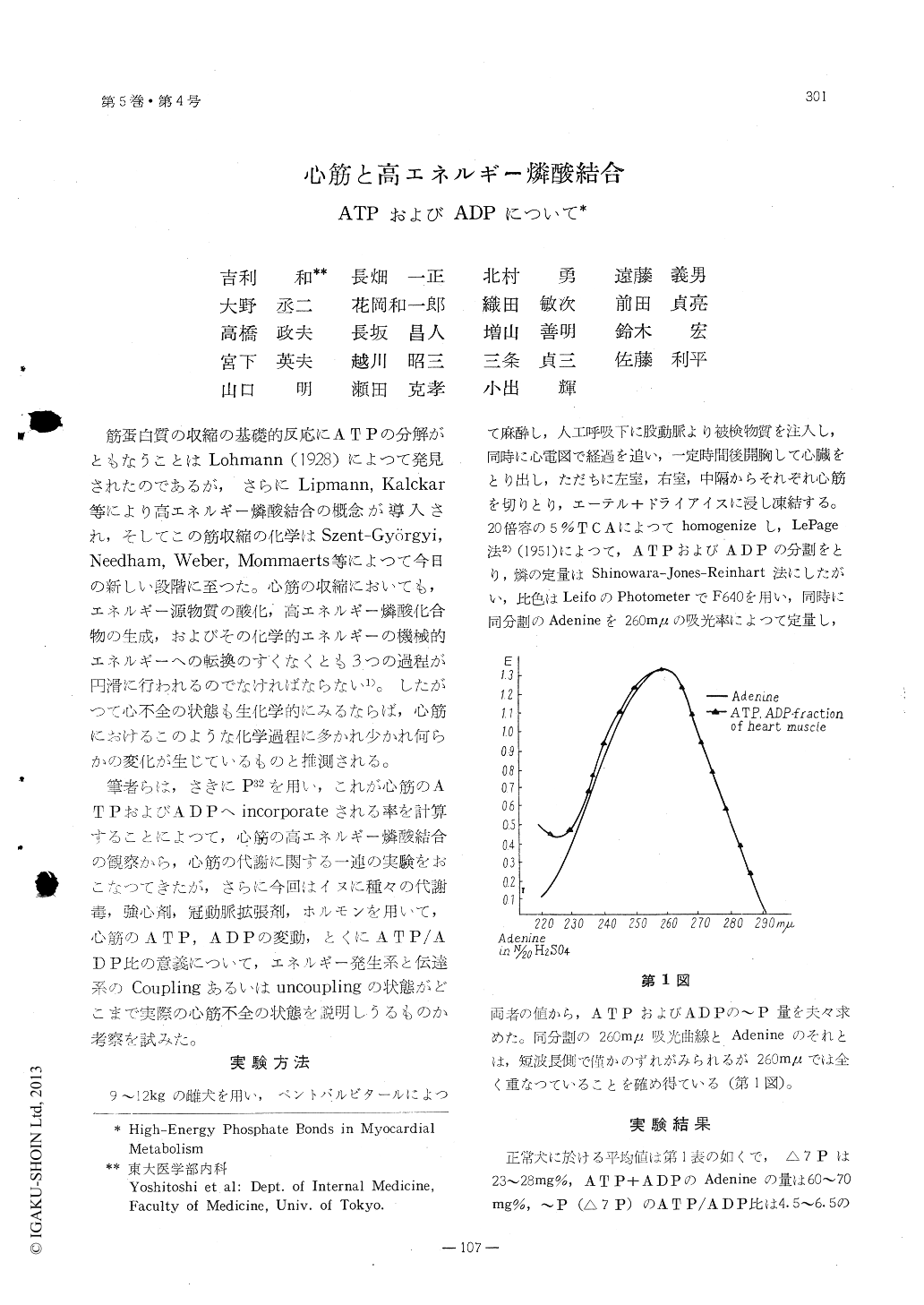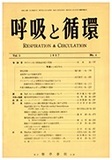Japanese
English
- 有料閲覧
- Abstract 文献概要
- 1ページ目 Look Inside
筋蛋白質の収縮の基礎的反応にATPの分解がともなうことはLohmann (1928)によつて発見されたのであるが,さらにLipmann, Kalckar等により高エネルギー燐酸結合の概念が導入され,そしてこの筋収縮の化学はSzent-Gyorgyi, Needham, Weber, Mommaerts等によつて今日の新しい段階に至つた。心筋の収縮においても,エネルギー源物質の酸化,高エネルギー燐酸化合物の生成,およびその化学的エネルギーの機械的エネルギーへの転換のすくなくとも3つの過程が円滑に行われるのでなければならない1)。したがつて心不全の状態も生化学的にみるならば,心筋におけるこのような化学過程に多かれ少かれ何らかの変化が生じているものと推測される。
筆者らは,さきにP32を用い,これが心筋のATPおよびADPへincorporateされる率を計算することによつて,心筋の高エネルギー燐酸結合の観察から,心筋の代謝に関する一連の実験をおこなつてきたが,さらに今回はイヌに種々の代謝毒,強心剤,冠動脈拡張剤,ホルモンを用いて,心筋のATP, ADPの変動,とくにATP/ADP比の意義について,エネルギー発生系と伝達系のCouplingあるいはuncouplingの状態がどこまで実際の心筋不全の状態を説明しうるものか考察を試みた。
The consideration that the high-energy phosphate bond of ATP may play an important role in the contraction of the contractile protein of heart muscle has recently called the attention of many investigators.
The authors observed the following changes of the amount of ATP and ADP in myocardium when various metabolic poisons, hormones and cardiotonic drugs were injected intravenously or administered orally to dogs, and they discussed the relationships between high-energy phosphates and myocardial meta-bolism in pathological state.

Copyright © 1957, Igaku-Shoin Ltd. All rights reserved.


